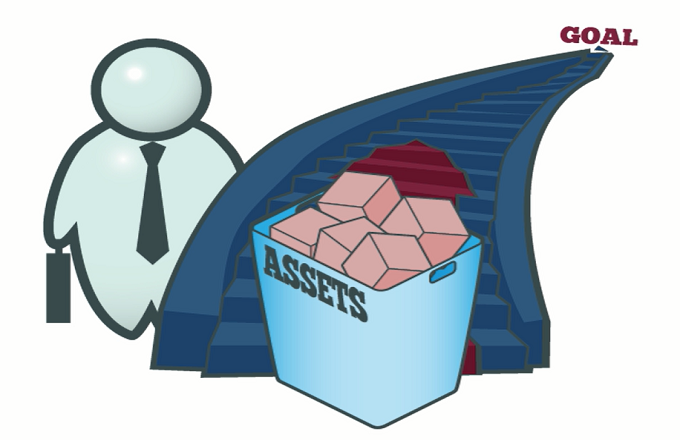Introduction
Your portfolio's creation and balance depend on your choice of assets. Each plan needs to use a combination of investments that reflects your goals, risk appetite, time horizon, and risk tolerance. Targets for asset allocation strategies that work, must occasionally be adjusted. The insured asset allocation method could be targeted at those who are cautious about risk and wish to take part in actively managing their investments.
Asset Allocation Strategies
This strategy establishes and follows a basic policy mix, which is a proportional combination of assets based upon expectations of returns for every asset type. It is advised to consider your timetable and risk tolerance. Setting your goals and then altering your portfolio shortly and afterward is possible. Like a buy-and-hold strategy, strategic asset allocation schemes strongly advise diversification to lower risk and boost profits.

Time Scale
Your time horizon is the period you'll devote to achieving a specific financial goal in months, years, or even decades. Longer-term investors may feel more comfortable making riskier, more volatile investments since they can tolerate slower economic cycles and our markets' inevitable ups and downs. As a result of their shorter time horizon, people saving to pay for a teenager's college education will probably be able to accept greater risk.
Risk Acceptance
Your ability and willingness to lose some, or even all, of your initial investment in exchange for greater earning potential is known as your risk tolerance. Aggressive investors with a high-risk tolerance run the danger of losing money in pursuit of bigger returns. A cautious investor with a low tolerance for risk will usually go for investments that can help them preserve their initial investment. According to the adage, Conservative investors have the "bird in the hand," while ambitious investors are searching for "two in the bush."
Risk vs. Reward
Reward and risk are intrinsically linked when investing. There's a reason you've heard the adage "no pain, no gain" because those words almost perfectly capture how reward and risk interact. Never allow anyone to persuade you that they are not. Each investment carries some level of risk. If you intend to purchase assets, such as bonds, stocks, or mutual funds, you must understand that you could lose some or even all of your investment.
The possibility of a larger investment return is an advantage of taking risks. When you have an investment aim with long-term objectives, instead of limiting your investments to those with lesser risk, like cash equivalents, you will probably make more money in this situation by prudently investing in assets that entail higher risk, like bonds or stocks. However, investing only in cash-based products might be a sensible choice if you have short-term financial objectives.
Investing Options
You should be aware that a range of investment options are available, including equities and equity mutual funds, municipal and corporate bonds, and bond mutual funds, even if the SEC cannot propose a specific investment strategy. Money-market funds, exchange-traded funds, and U.S. Treasury securities Bonds, equities, and cash are often used to achieve various financial goals. Let's examine the three main asset types' advantages and disadvantages.
Tactical Asset Management
The strategic asset allocation plan may appear fairly strict in the long run. For this reason, you may need to make short-term, strategic changes to the mix to seize unorthodox or atypical investment possibilities. This adaptability can give your portfolio a market timing element that enables you to profit from economic situations favoring one specific asset more than others.
As the overall strategic portfolio is returned once the anticipated short-term profits are achieved, tactical asset allocation is described as an active yet fairly passive strategy. Since you must first recognize when chances for short-term growth have diminished and then change your portfolio toward a long-term holding in the asset, this strategy involves discipline.

Allocating Assets Dynamically
The term "dynamic allocation" refers to the ability to continuously adjust the percentage of assets as the markets change and fluctuate and the state of the economy changes for the better or worse. The exact opposite of a constant weighting method, dynamic asset allocation involves selling assets that are declining and investing in ones that are expanding. You might sell your stocks if, for example, the market displays signs of weakness because you expect further drops. If the stock market appears healthy, you purchase stocks expecting further market increases.
Conclusion
It can be active or passive to allocate assets. The investor's goals, age, market expectations, and risk tolerance all play a role in whether they choose to utilize a certain asset allocation plan or a combination of different techniques. Always remember that the information in this article is only intended to serve as a broad guideline for how investors might include asset allocation methods into their overall strategy. Remember that allocation techniques that anticipate and react to market swings demand a great deal of expertise and experience in utilizing particular tools to time the market's moves. Make sure your strategy is resistant to unpredictable errors because some believe is correctly timing market movements is nearly impossible.
watch next


